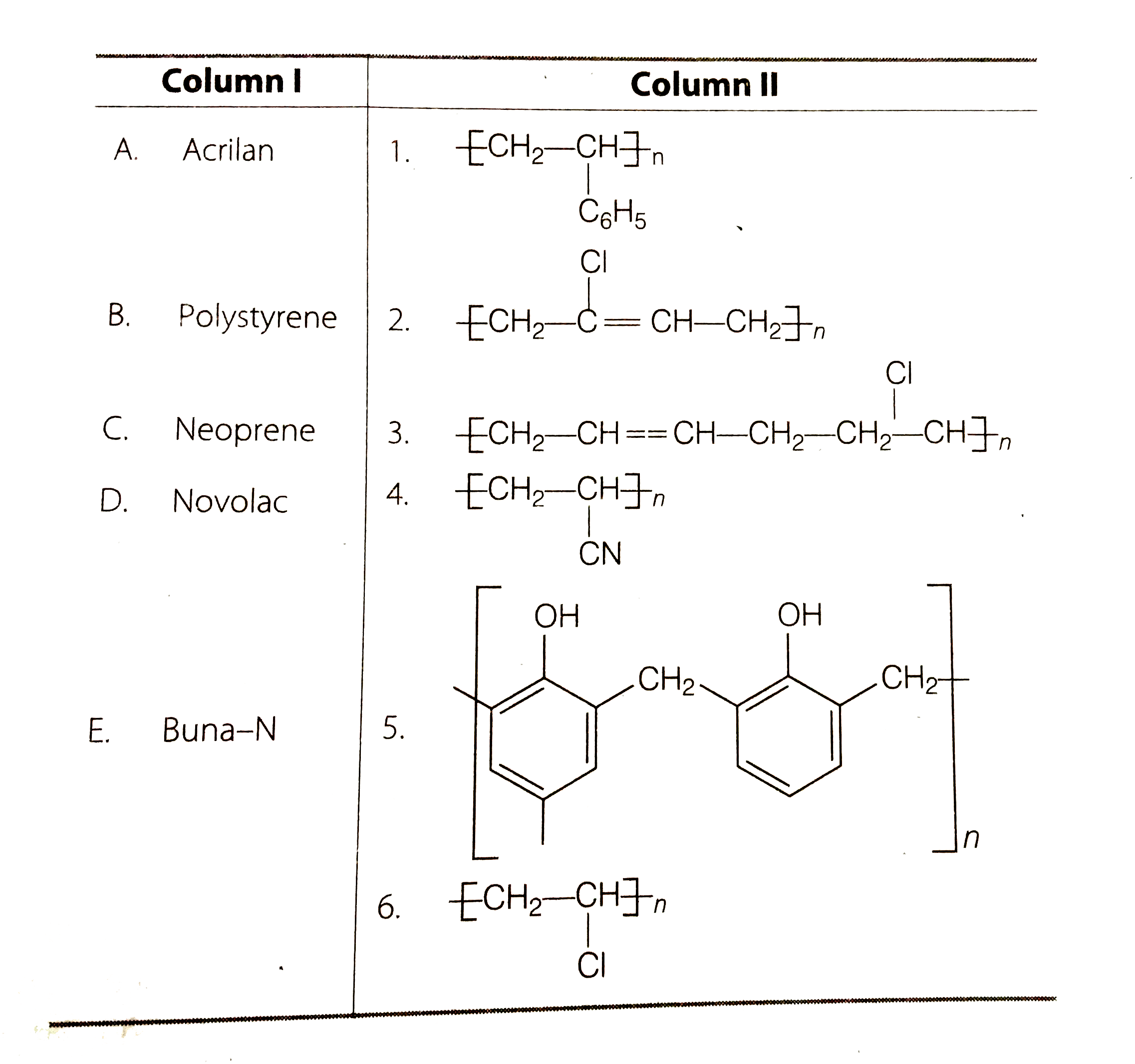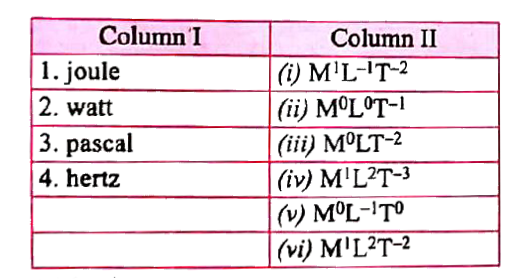Column IColumn II(A)Base unit(p)N(B)Derived unit(q)hp(C)Improper unit(r)kgwt(D)Practical(s)rad(E)Supplementary unit(t)kg
(Note : Here it is given that you have to match one to one only)Solution in Gujrati
The correct Answer is:(A)-t (B)-p (C)-r (D)-q (E)-s
Step by step video & image solution for {:(,"Column I",,"Column II"),((A),"Base unit",(p),N),((B),"Derived unit",(q),hp),((C),"Improper unit",(r),"kgwt"),((D),"Practical",(s),"rad"),((E),"Supplementary unit",(t),kg):} (Note : Here it is given that you have to match one to one only) by Physics experts to help you in doubts & scoring excellent marks in Class 11 exams.
Updated on:21/07/2023Topper's Solved these Questions
- MISCELLANEOUSBOOK - ALLEN CHAPTER - MISCELLANEOUSEXERCISE - ASSERTION-REASON
18 Videos
- MISCELLANEOUSBOOK - ALLEN CHAPTER - MISCELLANEOUSEXERCISE - Comprehension 1
5 Videos
- MISCELLANEOUSBOOK - ALLEN CHAPTER - MISCELLANEOUSEXERCISE - Exercise-01
87 Videos
- KINEMATICS (MOTION ALONG A STRAIGHT LINE AND MOTION IN A PLANE)BOOK - ALLEN CHAPTER - KINEMATICS (MOTION ALONG A STRAIGHT LINE AND MOTION IN A PLANE)EXERCISE - BEGINNER S BOX-7
8 Videos
- PHYSICAL WORLD, UNITS AND DIMENSIONS & ERRORS IN MEASUREMENT BOOK - ALLEN CHAPTER - PHYSICAL WORLD, UNITS AND DIMENSIONS & ERRORS IN MEASUREMENT EXERCISE - EXERCISE-IV
7 Videos
Similar Questions
Statement 1: whenevever the unit of measurement of a quantity is changed, its numerical value changes.
and
Statement -2 : Smaller the unit of measurement smaller is its numerical value.
View SolutionThe van der waal's gas equation is (P+aV2)(V−b)=RT, where P is pressure, V is molar volume and T is the temperature of the given sample of gas. R is called molar gas constant, a and b are called van der waal's constants.
The dimensional formula for b is same as that for
View SolutionA stone is dropped into a quiet lake and waves move in circles speading out radially at the speed of 5 cm/s. At the instant when the radius of the circular wave is 8cm, how fast is the enclosed area increasing?
View SolutionA football player kicks a ball at an angle of 30∘ with an initial speed of 20 m/s. Assuming that the ball travels in a vertical plane, calculate (a) the time at which the ball reaches the highest point (b) the maximum height reached (c) the horizontal range of the ball (d) the time for which the ball is in the air, (g=10m/s2)
View SolutionAssertion : Gravitational forces do not depend on the medium between the masses.
Reason : Mediating particle responsible for gravitational force is graviton.
View SolutionColumn IColumn II(A)Base unit(p)N(B)Derived unit(q)hp(C)Improper unit(r)kgwt(D)Practical(s)rad(E)Supplementary unit(t)kg
(Note : Here it is given that you have to match one to one only)
View SolutionMatch the units given in column-I with the physical quantities in column -II : [Here N-newton, kg -kilogram, s-second , m-metre]
View SolutionMatch the terms given in column I with the units given in column II.
View SolutionMatch the polymers given in column I with their repeating units given in column II

View SolutionMatch the quantities in Column-I with their units in Column-II:
View SolutionMatch the terms given in Column I with the units given in Column II.
View SolutionMatch the following units given in the column I with dimesnions in the column II.

View SolutionMatch the following units given in the column I with dimesnions in the column II.

View SolutionMatch the polymers given in Column I with their repeating units given in Column II.
View SolutionMatch the physical quantities in Column I with the units given in Column II.
View Solution
